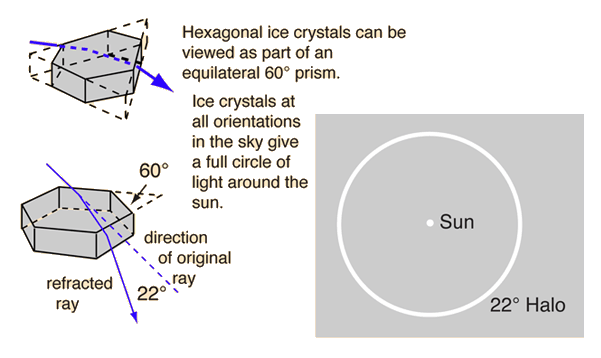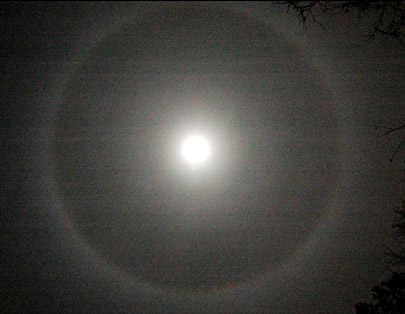Moon Halo
The familiar 22° halo around the Sun or Moon occurs because of refraction in tiny hexagonal ice crystals in the air. With the 60° apex angle of the prism formed by extending the sides of the crystal and the index of refraction of ice (n=1.31) one can calculate the angle of minium deviation to be 21.84°.


The moon halo above was photographed at Pearl River, LA just after the passage of a cold front. It is attributed to refraction in high altitude ice crystals. Ground level temperature was close the freezing point and the relative humidity was about 70%. It had rained the previous day, but was clear most of this day, yet apparently there was considerable high altitude moisture to form the ice crystals. The 22° halo around the sun is usually brighter on the horizontal line passing through the sun because of preferential orientation of flat hexagonal ice crystals as they fall. This produces the parhelia or sundogs. The moon halo appears uniform over the full 22° circle because the moon was close to zenith and there was no preferential orientation from that vantage point.
| Calculation | Can you have diffraction at this angle? |
| Other halo phenomena |
Halo formation
Atmospheric optics concepts
References
Greenler
Schaaf
| HyperPhysics***** Light and Vision | R Nave |